
- Share via
Patty Perkinson wakes up around 5 a.m. in the pitch black of her Rancho Palos Verdes home.
She grabs the large flashlight on her nightstand before she carefully makes her way out to the backyard — avoiding the sliding glass door that will no longer open, passing the cracked and empty pool — to turn on the generator.
Then, she briefly turns on some lights — but not too many — as she gets ready for work alongside her trusty companion, Nike, a fluffy, 14-year-old white Havanese. Perkinson wastes no time, trying to minimize the minutes that her generator guzzles more of the pricey propane. The fuel has become a saving grace, and constant concern, for the 61-year-old high school teacher.
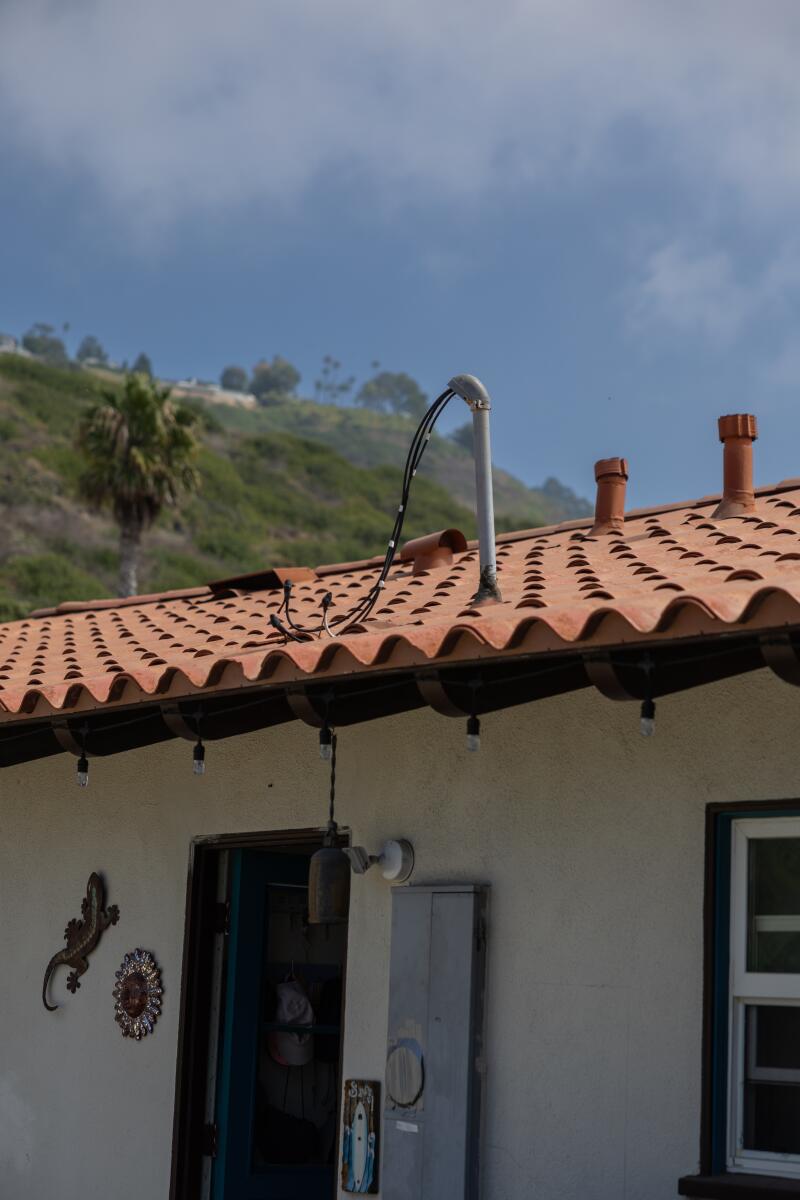
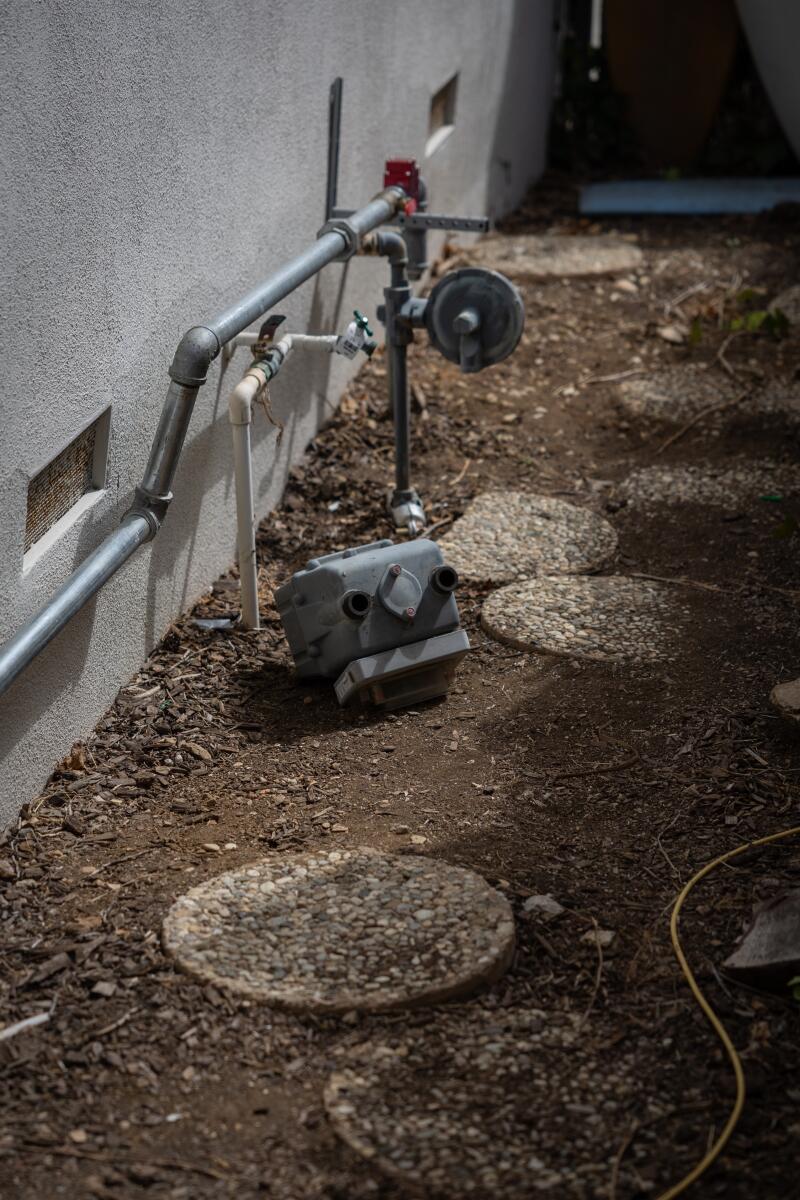
Although the electric and natural gas service have been disconnected at Patty Perkinson’s home, she is getting by, thanks to the help of generous loved ones. (Jason Armond/Los Angeles Times)
But Perkinson is doing her best to adjust to her new, cobbled-together way of life, ever since she and scores of other residents on the Palos Verdes Peninsula lost power and natural gas service because of worsening landslides in the area.
Almost 300 homes in four nearby neighborhoods are dealing with indefinite electricity shutoffs, according to Southern California Edison. Nearly 230 homes have had natural gas turned off, also indefinitely. Many have lost both as utility companies try to minimize the hazards that come with infrastructure breakdowns, such as gas leaks and potential fire-igniting sparks.
At the root of the escalating emergency in the Portuguese Bend area of the peninsula is unprecedented land movement that has expanded and drastically accelerated, reaching up to a foot a week in some areas. The movement may also be even more widespread than originally observed.
Experts have said the landslides were triggered by rising groundwater levels caused by back-to-back years of exceptionally wet winters.
Despite the worsening conditions and utility shutoffs, the majority of residents are staying in their homes, fighting for the properties, and livelihoods, that many have spent decades building.

The first week without utilities, Perkinson was without any source of power. No refrigerator, no hot water, no stove. No way to safely store Nike’s leftover canned food. No way to charge devices or power her home broadband service.
She often stayed with friends and family, though she made sure to rotate where she showered and did laundry and slept, so as not to overstay her welcome. All the while, much of her time and energy were spent trying to figure out how to bring power — and some semblance of normalcy — back to her beloved “Pattywood,” the home where she has lived her entire life. Her parents purchased the one-story home in 1957, and Perkinson and her three siblings grew up there. She became the sole owner and resident — with Nike — after her parents died.
“I’ve lived in this house for 61 years,” Perkinson said. “I’m doing whatever I can to survive. … I don’t wanna give up.”
Now, almost three weeks without vital utilities, she is getting by, thanks to the help of generous loved ones — and more money and complicated steps than she could have imagined. But much about the future remains in question.
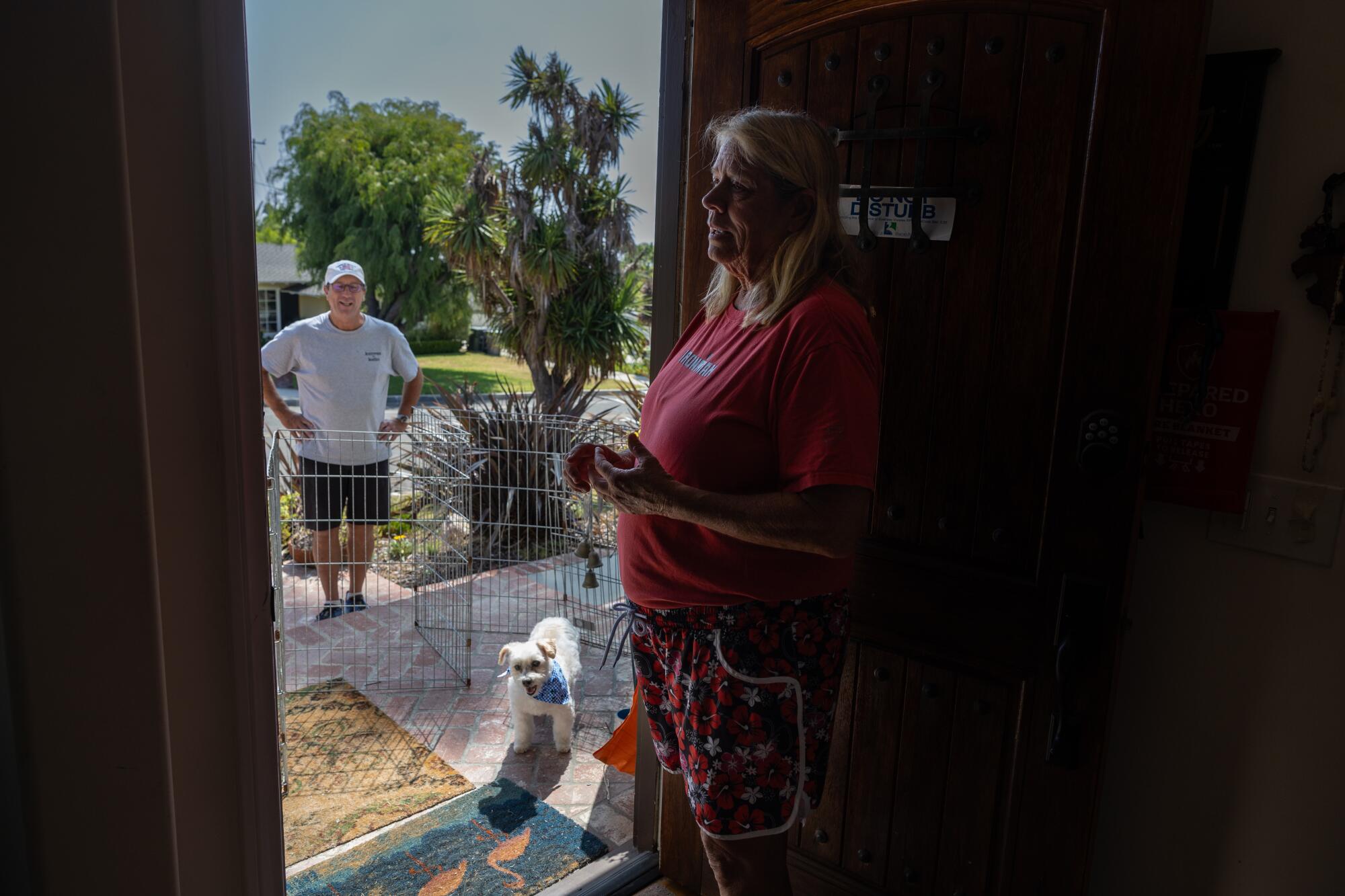
“I was getting ready to retire,” Perkinson said, looking around at her arsenal of lanterns and her home’s bare walls, cleared of family photos in case she’s forced to evacuate.
This was supposed to be her last year teaching physical and special education at Mira Costa High School in Manhattan Beach. But now she doesn’t see how she could afford to stop working. “Emotionally and financially, it’s a struggle.”
One friend lent her a generator and helped convert her gas appliances to propane. She paid to have two 110-gallon propane tanks installed in her yard to fuel the generator as well as the recently converted stove, water heater and, soon, the dryer.
Just this weekend, after one of her neighbors finalized their new, off-grid solar power system, they offered to let Perkinson snake an extension cord over their shared fence so she could finally run her refrigerator again.
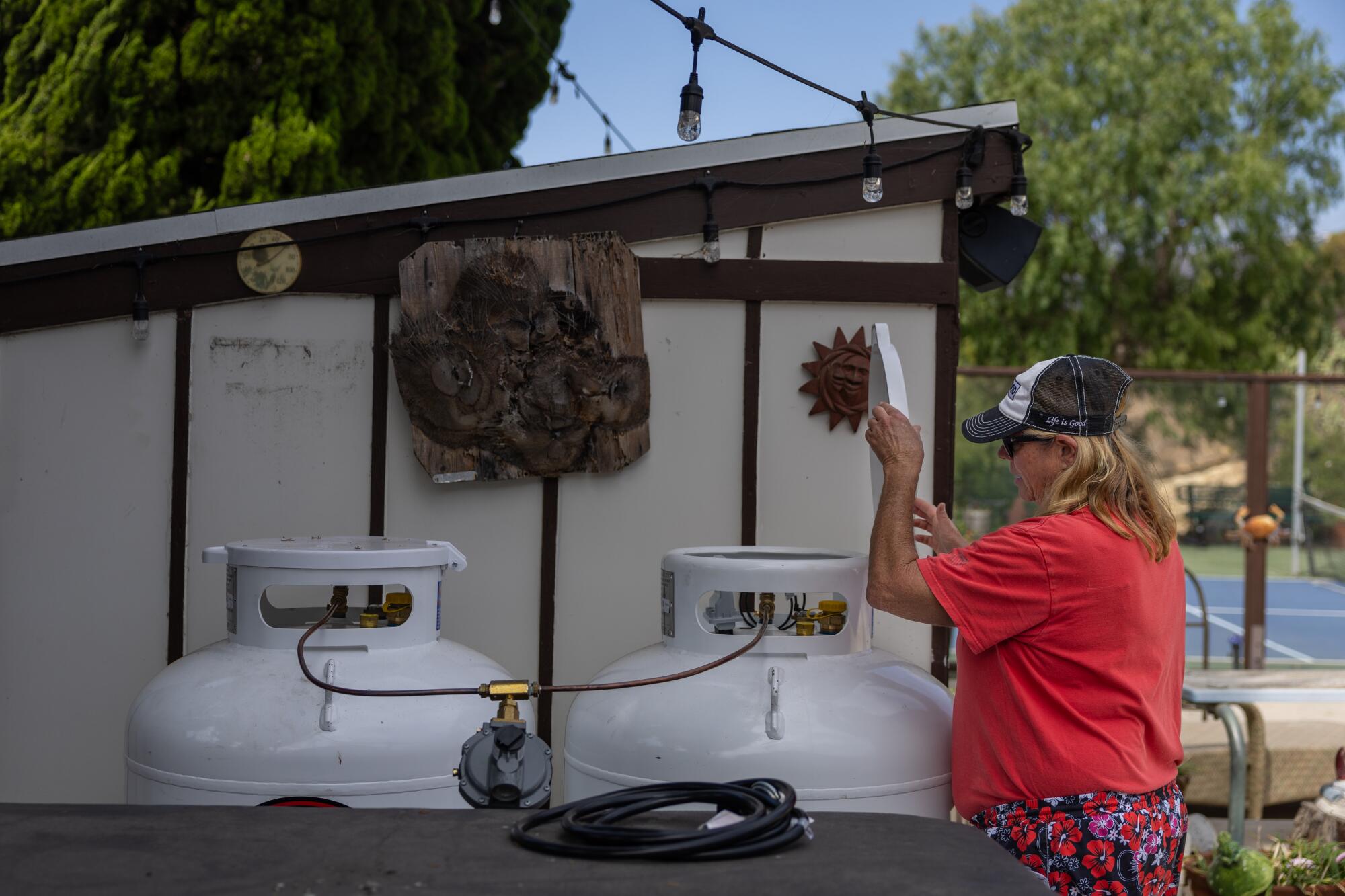
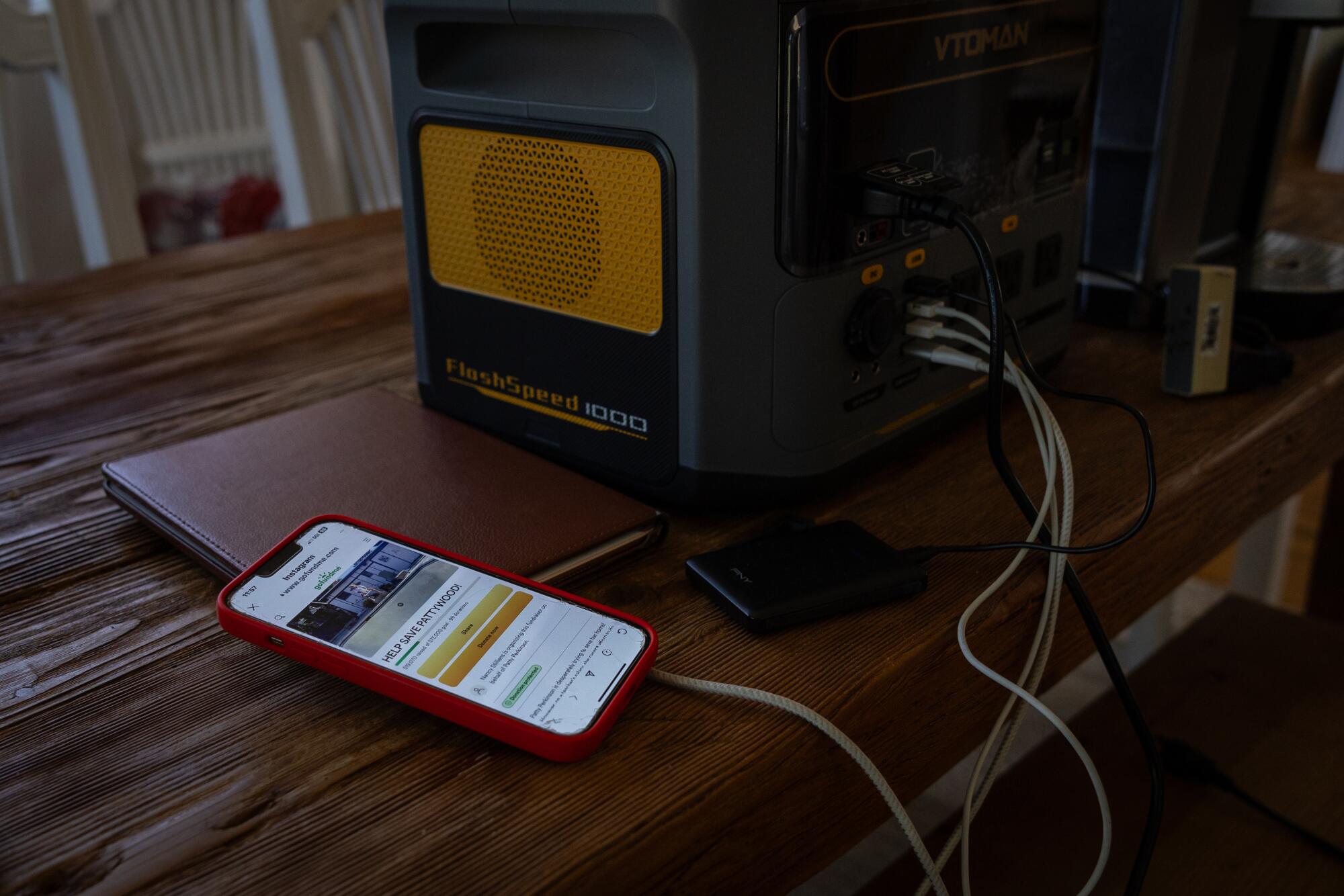
Another friend gave her a giant battery, which she uses to charge her phone, iPad and watch and, most mornings, to power her coffee maker. After work, she’ll lug the toaster-oven-sized block with her, along with any dirty laundry she has, to recharge the battery and do her wash after work at a friend’s house.
Perkinson estimates she’s spent several thousand dollars to get the propane tanks installed, the wiring set up and necessary conversions completed. Meanwhile, most of her neighbors have started working toward the switch to solar energy, but the quotes she received for her home — $50,000 or higher — were well out of her price range.
Some neighbors have been forced out, Perkinson said, particularly older residents who don’t have the money to convert their power sources or aren’t savvy enough to deal with the complicated processes. She worries that solar power could be the only feasible way to remain in her home long term.
“Life used to be good at Pattywood — not anymore,” Perkinson said. “I’m planning on staying because, where do you go?”

Although the utility shutoffs have become the most pressing issue of late, Perkinson is also dealing with escalating landslide damage across her property since July of last year — around the time two homes down the street were red-tagged, or deemed unsafe to reenter, and the intersection of Dauntless and Exultant drives was shuttered after land movement cracked and completely disfigured the roads. In recent weeks, three more homes in the area have been yellow-tagged, marking them as unsafe for occupants, according to Rancho Palos Verdes officials.
Wayfarers Chapel, the iconic glass chapel designed by architect Lloyd Wright — which was located about two miles west of Perkinson’s home — has also been deconstructed and put into storage due to escalating damage.
Perkinson has made countless repairs of wall and ceiling cracks, and tried — futilely — to plug the gaps in her swimming pool floor. She’s been forced to close her backyard pickleball court due to uneven ground and relocate the swim lessons she teaches, typically the bulk of her summer income. She tries not to look up at the nearby canyon walls, where massive fissures and scarps have eroded the hiking trails that border her Seaview neighborhood.
“Everything’s cracking,” Perkinson said. “You’re forever fixing something.”
1

2
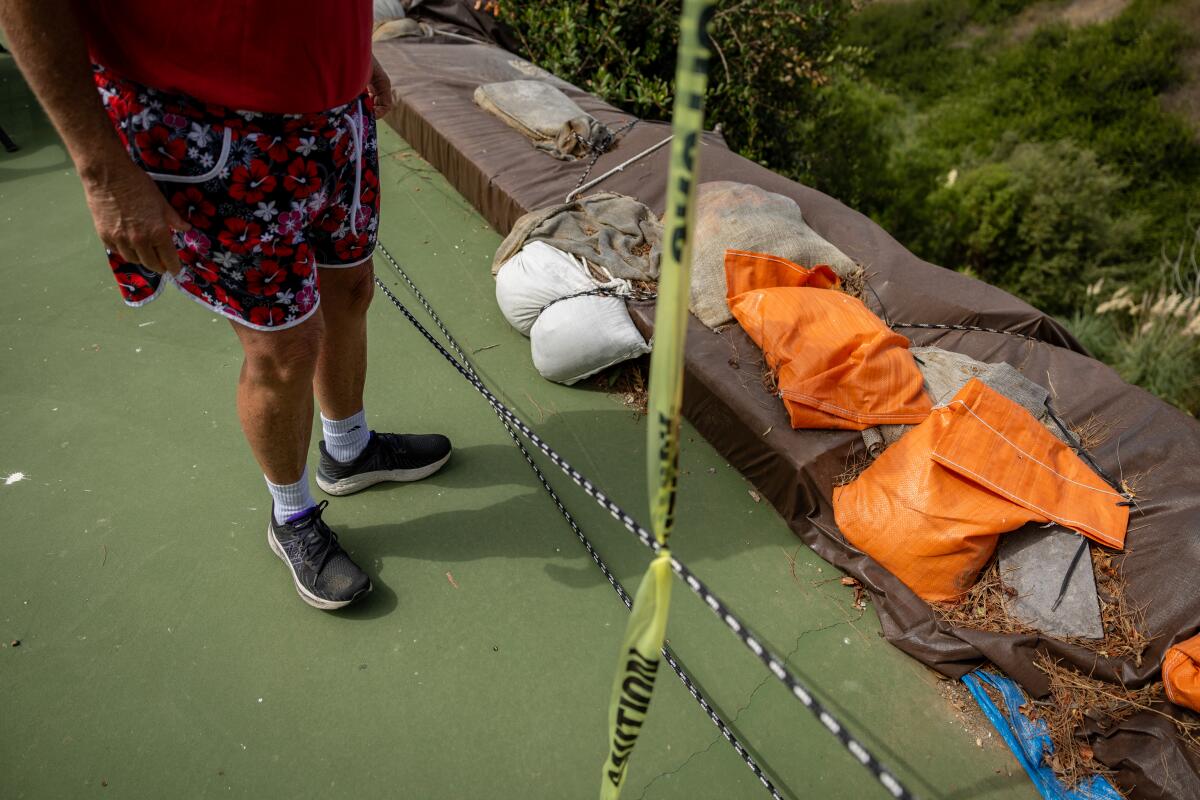
1. Cracks have formed in the pool at Patty Perkinson’s home 2. The retaining wall behind Patty Perkinson’s home
In her lifetime, the house has never seen damage anywhere close to this, she said.
A friend set up an online fundraiser for Perkinson earlier this summer that was initially aimed at helping her finance a major stabilization project. But now Perkinson said she thinks that any money raised will have to go toward a long-term energy solution — one that doesn’t require extension cords to her neighbor’s house and turning the generator off and on.
“We’re doing a pretty good job but we do need help,” Perkinson said, adding that she and her neighbors feel abandoned by government.
Despite the circumstances, Perkinson is finding ways to stay positive, hopeful that the city’s de-watering well pilot project could help stabilize the ground. She also has faith that California Water Service will stick around, as the utility has been working for months to move its lines above ground and respond to the land movement.
“I have hope, for sure,” she said, smiling as she gazed toward the sparkling Pacific. “Who would want to move, right? ... I’m a fighter.”
She reminisces about epic pool parties in her backyard, with a live band and fresh tacos and friends and family — something she is determined to bring back when it’s safe. For now, though, sandbags and plastic tarps line her property, and visitors are greeted by a yard sign that reads, “SOS: Save Our Seaview.” It’s hard to talk over the grating sound of the generator when it’s on.
And all that does weigh on Perkinson. When she turns off her generator at night, sometimes extra early to save money, she says she ends up lying in bed with nothing but the nighttime and her roaming mind.
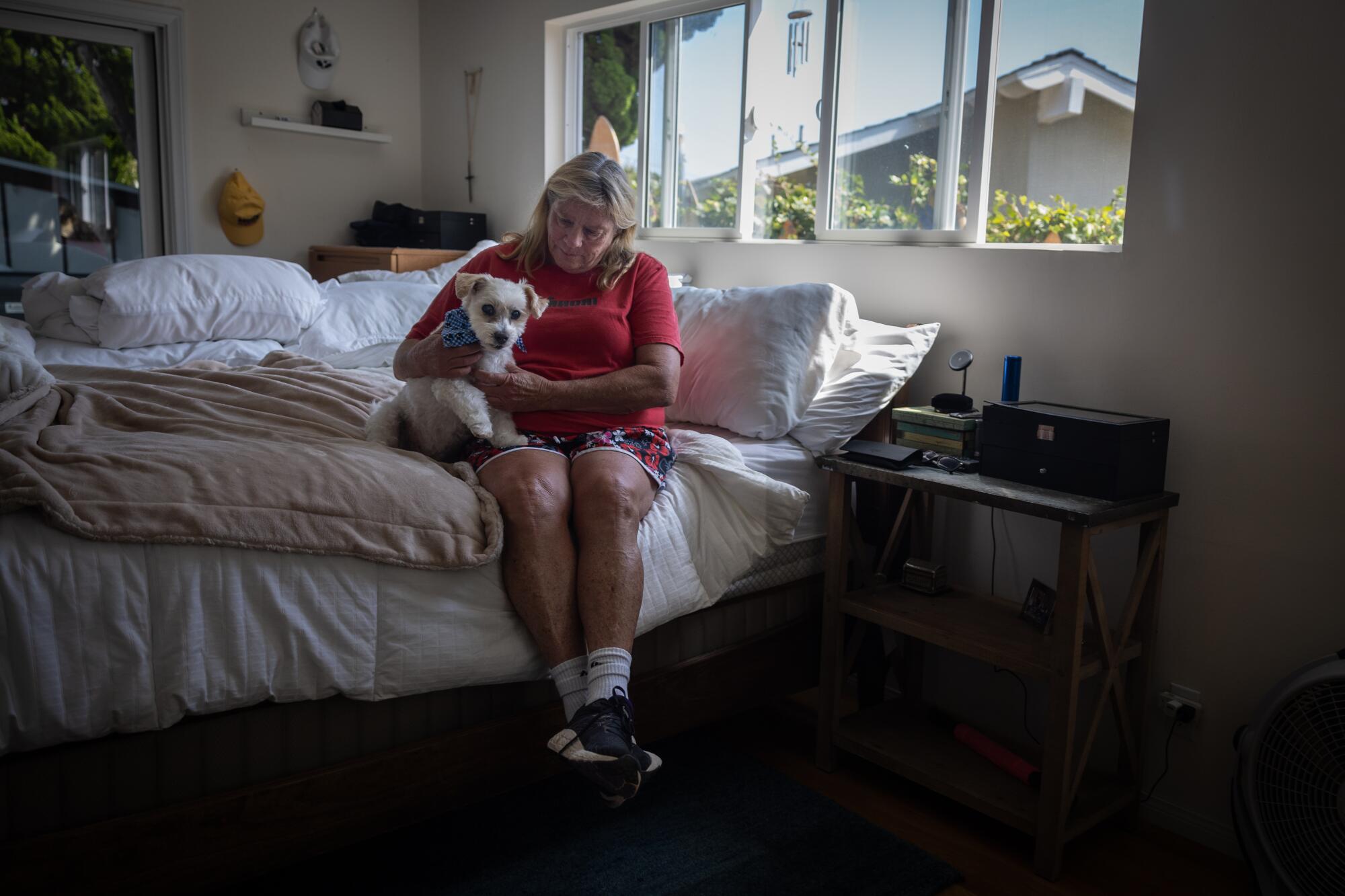
That’s when she finds herself worrying about her safety in the dark home, about what would happen if the roads become too warped for her to even reach her home, and about the worst case scenario: if she had to leave Pattywood for good.
“Then your wheels start turning,” she said. “You’re like, ‘Oh, I need to do this and this, and the rain’s coming up.’ ... I get anxiety.”
“Am I going to retire?” she wondered aloud. “Where am I going to go?”
More to Read
Sign up for This Evening's Big Stories
Catch up on the day with the 7 biggest L.A. Times stories in your inbox every weekday evening.
You may occasionally receive promotional content from the Los Angeles Times.












